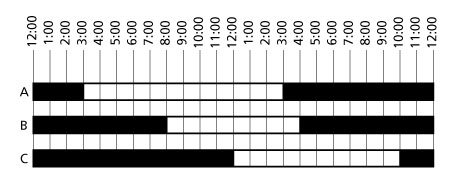 Winter Solstice 2006 — Dark Days of Winter
Winter Solstice 2006 — Dark Days of Winter
It’s cold. It’s dark. It’s wet. There’s no fresh produce. It’s clearly time for a celebration.
It’s the winter solstice. This year (2006) the solstice occurs just after midnight at 12:22 a.m. between Thursday, December 21st and Friday, December 22nd. You may already know that the winter solstice is the shortest day of the year, and here are some other cool facts that you may not know.
Dark Days of Winter:
The United States Naval Observatory (USNO, a reliable source for all kinds of astronomical measurements) brought the “Dark Days of Winter” to my attention. Although the winter solstice is the shortest day and the longest night of the year, it’s not the day that the sun rises latest or the day the sun sets earliest. The earliest sunset happened two weeks ago on December 5th. Unfortunately, even after the solstice it’s going to continue to become harder to get up in the morning because the sun will be rising later and later all the way until January 3rd.
| Date | Sunrise | Sunset | Hours of Daylight | |
| December 5th, 2006 | 7:41am | 4:18pm | 8 hours and 37 minutes | Earliest Sunset |
| December 22nd, 2006 | 7:55am | 4:20pm | 8 hours and 25 minutes | Shortest Day |
| January 3rd, 2007 | 7:58am | 4:30pm | 8 hours and 32 minutes | Latest Sunrise |
| January 4th, 2007 | 7:57am | 4:31pm | 8 hours and 34 minutes | Perihelion |
These dark winter days are caused by the fact that the Northern hemisphere of the Earth (where we live) is tilted away from the Sun in the winter, not because the Earth is farther from the Sun. The opposite is true on January 4, 2007. At 3 p.m. the Earth will be at the point in its orbit closest to the Sun, which is known as perihelion. At midnight on July 7, 2007, during the height of summer, we will be at aphelion or the furthest point from the Sun.
Update: An image to help you interpret how it is possible to have the earliest sunset and latest sunrises on different days than the shortest day of the year. Yes, this is confusing so think about it for a little bit. At a future date I will attempt to write a full explanation.

Approximated Diagram of the Earliest Sunset, Latest Sunrise, and the Shortest Day of the year. Attrib: Alice Enevoldsen
Interpretation Ideas:
This is easy to work into any star show this week, either when talking about the North Star or just before showing the sunrise. Whip out the Earth-on-a-stick, do a quick seasons demo, or just show the earth’s tilt. If you have more time, show how high the sun is on the meridian on the day of the winter solstice, and then again later in the year.
Want More?
http://aa.usno.navy.mil/faq/docs/dark_days.html
Where’d I Get My Info?
http://aa.usno.navy.mil/faq/docs/dark_days.html
http://aa.usno.navy.mil/data/docs/EarthSeasons.html
http://aa.usno.navy.mil/data/docs/RS_OneDay.html
![]()
~ A l i c e !




